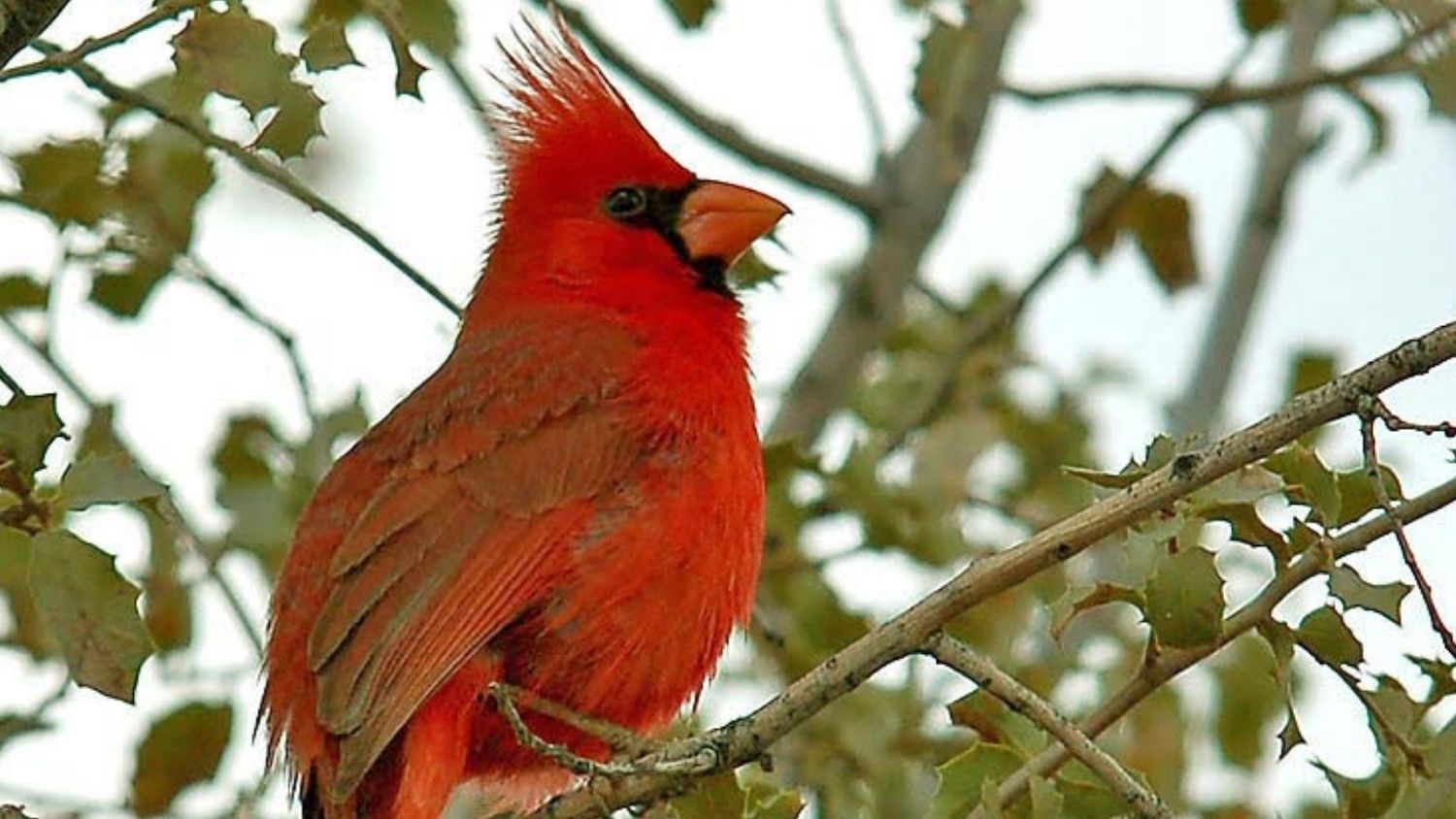Noise and Light Pollution Impact Songbird Reproduction

For Immediate Release
The distant hum of a lawnmower on an early weekend morning or the glare of a streetlight through a window at night can be an annoyance, but for wildlife, noise and light pollution can impair their ability to communicate and forage, and disrupt their internal clocks.
An international team of researchers combined thousands of songbird nest observations from volunteers and found that increases in noise and light pollution were linked to the timing of when songbirds nest, the number of eggs they lay and other factors important to their reproduction.
“We already know that songbirds are facing threats from climate change, plus, they’re experiencing habitat fragmentation and habitat loss with more intensification of agriculture and urbanization. Even if we are able to address some things by adding habitat, our findings show that if there’s noise and light pollution, birds might not breed well there,” said Caren Cooper, associate professor in the North Carolina State University Department of Forestry and Environmental Resources and a study co-author.
Published in Nature, the study led by researchers at California Polytechnic State University, along with researchers from NC State and other institutions, provides the most comprehensive picture yet of the impact of human noise and light pollution on birds in North America, and how these factors interact with or mask the impacts of climate change.
The findings were drawn from 58,506 nest observations for 142 different species of songbirds in the continental United States. The observations were gathered across 14 years by volunteers who participated in a citizen science project called NestWatch, run by The Cornell Laboratory of Ornithology.
“There’s no single scientist who collected all of these data,” said Cooper, who directs the Citizen Science Campus program at NC State. “Even if all of the scientists involved in this paper went out there to monitor birds around us, we would never get 60,000 nests around the country. It required having eyes and ears and these nest monitors collecting data where they lived.”
Researchers combined the nest records with continental-scale noise and light-pollution maps. It was a big data challenge that created the opportunity to combine citizen science and geospatial analytics, said NC State’s Jelena Vukomanovic, a co-author of the study, assistant professor in the Department of Parks, Recreation and Tourism Management and a faculty fellow at the NC State Center for Geospatial Analytics.
“With noise and light, it seems almost innocuous; it’s not like dramatic habitat alterations,” Vukomanovic said. “But it’s everywhere.”
In response to light pollution, researchers saw that birds had different responses depending on traits such as their ability to see in low light or their habitat. Birds with better vision in low light benefited from light pollution, showing an increase in hatching success and likelihood of successfully raising chicks that fledged from the nest. Researchers said these species could be using light to hunt for food more effectively.
When they looked at birds by habitat, they saw that birds that nest in open areas like wetlands or grasslands began laying their eggs a month earlier on average when exposed to more light than those in darker areas. For birds that nest in forests, egg-laying began about 18 days earlier in lighter areas.
That could mean chicks are hatching before there is enough food to feed them, researchers said, but that situation is complicated by climate change – with food available earlier due to warmer weather. The researchers hypothesized that birds nesting in areas with more light may be tracking climate change better than those in dark areas.
“We discovered that birds advanced the timing of their reproduction in response to increased light pollution actually have better reproductive success,” said Clinton Frances, a biology professor at Cal Poly and one of the lead authors of the study. “A likely interpretation of this response is that light pollution actually allows these birds to ‘catch up’ to the shift toward earlier availability of food due to climate change.”
Considering the impacts of noise pollution, researchers found that increased noise in forests meant songbirds nesting there laid fewer eggs and were less likely to successfully raise all of their chicks. Human-generated noise could be affecting male mating songs, especially in forests where they tend to sing at lower pitches. The female birds could have more difficulty hearing male birdsongs through low-frequency human noise.
“For noise pollution, it’s not just the volume; it’s not just about it being noisy,” Cooper added. “There are anthropogenic noises that are known to have an effect on stress, sleep, circadian rhythms, ability to communicate – whether it’s loud like a jet flying overhead, or soft like the hum of traffic.”
The study, “Sensory pollutants alter bird phenology and fitness across a continent,” was published in Nature on Nov. 11. The authors were: Masayuki Senzaki, Jesse R. Barber, Jennifer N. Phillips, Neil H. Carter, Cooper, Mart A. Ditmer, Kurt M. Fristrup, Christopher J.W. McClure, Daniel J. Mennitt, Luke P. Tyrrell, Vukomanovic, Ashley A. Wilson and Clinton D. Francis. The study was supported by National Science Foundation Grants 1414171 to Francis and Barber, 1556177 to Barber, 1556192 to Francis, an 1812280 to Phillips; NASA Ecological Forecasting Grant NNX17AG36G to Carter, Francis and Barber, and Japanese Society for the Promotion of Science KAKENHI grant 17J00646 to Senzaki.
-oleniacz-
Note to editors: The abstract follows.
“Sensory pollutants alter bird phenology and fitness across a continent”
Authors: Masayuki Senzaki, Jesse R. Barber, Jennifer N. Phillips, Neil H. Carter, Cooper, Mart A. Ditmer, Kurt M. Fristrup, Christopher J.W. McClure, Daniel J. Mennitt, Luke P. Tyrrell, Vukomanovic, Ashley A. Wilson and Clinton D. Francis.
Published in Nature, Nov. 11, 2020
DOI: 10.1038/s41586-020-2903-7
Abstract: Expansion of anthropogenic noise and night-lighting across our planet is of increasing conservation concern. Despite growing knowledge of physiological and behavioral responses to these stimuli from single-species and local-scale studies, whether these pollutants impact fitness is less clear, as is how and why species vary in their sensitivity to these anthropic stressors. Here, we leverage a large citizen science dataset paired with high-resolution noise and light data across the contiguous United States to assess how these stimuli affect reproductive success in 142 bird species. We find responses to both sensory pollutants linked to species’ functional traits and habitat affiliations. For example, birds in closed environments experienced strong declines in overall nest success due to noise. Species-specific changes in reproductive timing and hatching success due to noise exposure was explained by vocalization frequency, nesting location and diet. Additionally, increased light-gathering ability of species’ eyes was associated with stronger advancements in reproductive timing in response to light exposure, potentially creating phenological mismatches7. Surprisingly, better light-gathering ability was linked to a decline in clutch failure and increase in overall nest success in response to light exposure, raising important questions about how responses to sensory pollutants counteract or exacerbate responses to other aspects of global change, such as climate warming. These findings demonstrate that anthropic noise and light can substantially affect breeding bird phenology and fitness and underscore the need to consider sensory pollutants alongside traditional dimensions of the environment that typically inform biodiversity conservation.
- Categories:


